#unix news
Explore tagged Tumblr posts
Text
Big news for ZFS Linux and Unix users: The latest release, version 2.3.0, finally brings raidz expansion! No more storage headaches and you can easily add a new HDD
1 note
·
View note
Text
Unix Price USD today, Chart, News, Prediction

UniX Price Today (Unix Price Today) UniX Gaming is a decentralized autonomous organization (DAO), which is bridging the gap between Play-To-Earn games and the most essential part of the Metaverse, the Players. UniX Gaming offers a wide range of utility with it’s Token; be involved with DAO Vaults generating high yield returns, access to the IGO launchpad which will onboard the latest Play-To-Earn titles. Lightpaper | Website UniX Gaming Partners Pluto Digital | Scrypt | LD Capital | Akatsuki | AU21 Capital | SL 2 Capital The biggest Metaverse Guild UniX Gaming with over 188,000 members on Discord. Take an active role in building the UniX Gaming Ecosystem alongside their 500,000 strong following. UniX Gaming is a DAO V2, an enhanced DAO to the recently adopted DAOs in the Metaverse.
Read More- UniX Price Prediction
#UniX Price#UniX Price USD#UniX Price Today#UniX Price Prediction#UniX News#UniX Price Live#Current UniX Price#UniX Price Chart#UniX Price History
0 notes
Text
VIM author Bram Moolenar has died.
Moolenar has been developing the vim text editor for 20 years and encouraged users to donate to children in Uganda. He was a living legend, and will remain a legend as long as programming itself exists.
Rest in peace king.
188 notes
·
View notes
Text
hello beard-havers and non-beard-havers i am here to advertise my pubnix ig
toki.club is a toki pona themed pubnix where we can vibe together on the machine and play games, chat, maybe projects, etc.
a pubnix is a “public unix” system where people interact with it by ssh-ing in.
we have https hosting, long-form blogging, a matrix homeserver, and other goodies!
if youre interested in joining send me a dm with the following:
username (what you’ll use to log in and see in paths and whatnot)
display name (what you’ll see in our services usually)
public ssh key (you’ll use this to log in)
and i’ll get you set up if your vibes are good :3
#linux#unix#pubnix#rule#196#r/196#idk how many people im going to get from this but >:3#would be nice to have some new friends around
41 notes
·
View notes
Text

I did something! It's conky with Antares theme and some tweaking.
#GNOME#unix#linux#ubuntu#rice#conky#antares#dekstop setup#I really like this#I've found a new rabbit hole
5 notes
·
View notes
Text
macOS and UNIX: Understanding Their Connection.
Sanjay Kumar Mohindroo Sanjay Kumar Mohindroo. skm.stayingalive.in Discover how macOS meets UNIX standards in this inspiring, in-depth professional guide for tech professionals. In today’s fast-evolving technological landscape, where innovation and legacy intertwine seamlessly, understanding the intrinsic connection between macOS and UNIX not only offers valuable insights into the evolution of…
#BSD#developer insights#hybrid kernel#macOS#News#NeXTSTEP#operating system history#operating systems#POSIX#professional guide#Sanjay Kumar Mohindroo#tech innovation#technology evolution#The Open Group#UNIX#UNIX certification#UNIX compliance#XNU kernel
0 notes
Text
Tech Transformations: How Technology is Shaping Our World
In the ever-evolving world of technology, staying ahead of the curve is not just a necessity—it's a way of life. From groundbreaking innovations in artificial intelligence to the seamless integration of smart devices, tech is transforming every aspect of our lives. If you're looking for a hub of knowledge and updates in the tech niche, Unix Network is your ultimate destination.
The Rise of Smart Tech
Smartphones, wearables, and IoT devices have revolutionized how we interact with the world around us. With features like voice assistants, home automation, and real-time connectivity, smart tech is no longer a luxury but a part of everyday life.
Unix Network explores the latest trends in smart technology, helping readers stay informed about how these tools can enhance productivity and convenience.
AI and the Future of Work
Artificial Intelligence is no longer a concept of the future—it’s here. From automating routine tasks to providing predictive analytics, AI is reshaping industries and opening new doors for innovation.
Dive deeper into the impact of AI and its applications across sectors on Unix Network, where you’ll find insightful articles and resources.
Why Unix Network Stands Out
When it comes to reliable tech updates, Unix Network is unmatched. Whether you're a tech geek, developer, or casual reader, the platform offers:
In-depth reviews
Latest tech news
Tutorials to help you navigate the digital landscape
Stay informed. Stay inspired. Visit Unix Network and explore the world of tech like never before. 🌐
#Technology#Tech Blog#Innovation#Artificial Intelligence#Smart Tech#IoT#Unix Network#Tech News#Future Tech#Digital Transformation#AI Revolution#Tech Trends#Smart Devices#Tech Updates#Tech Insights
0 notes
Text
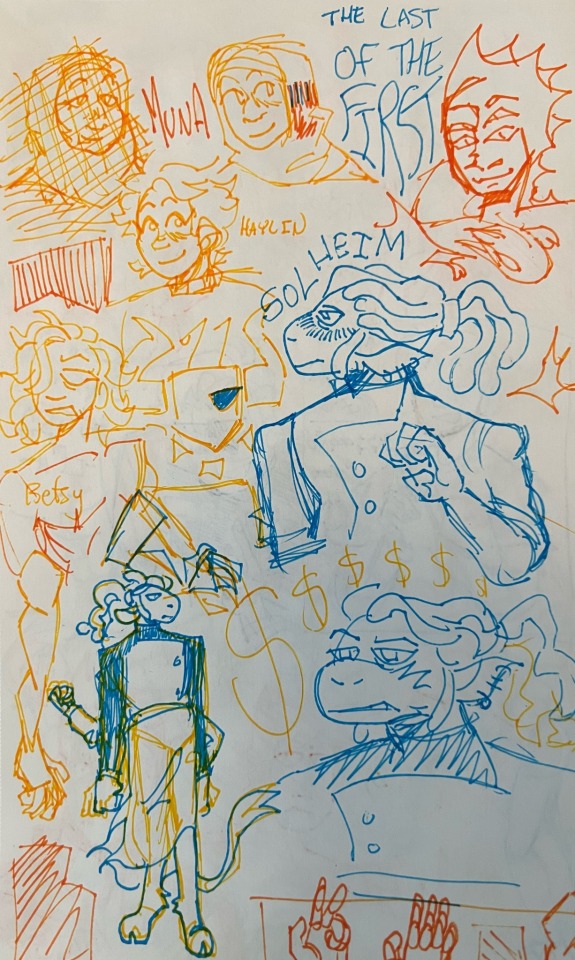


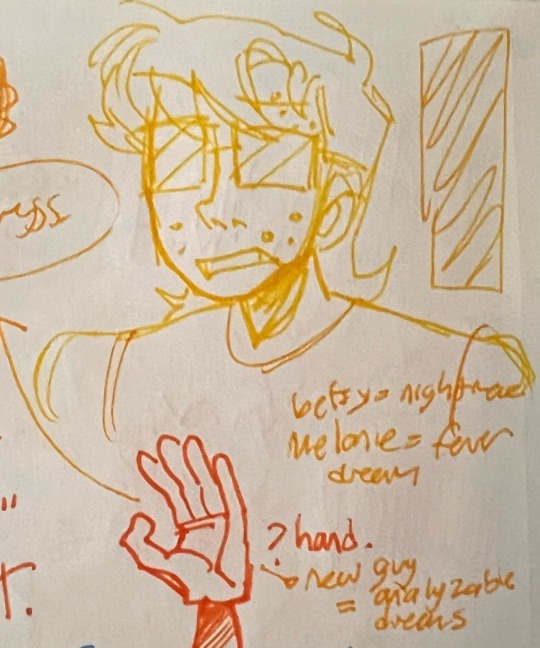
#normally I don’t share doodles anymore#but I love these new pens I got#I already lost one though so.#anyways#muna#haylin#solheim#serpentine#circuit#max#Sona tag#unix#betsy
1 note
·
View note
Text
Who Broke the Internet? Part III

I'm on a 20+ city book tour for my new novel PICKS AND SHOVELS. Catch me in PDX on Jun 20 at BARNES AND NOBLE with BUNNIE HUANG. After that, it's LONDON (Jul 1) and MANCHESTER (Jul 2).

Episode 3 of "Understood: Who Broke the Internet?" (my new CBC podcast about enshittification) just dropped. It's called "In God We Antitrust," and it's great:
https://www.cbc.ca/listen/cbc-podcasts/1353-the-naked-emperor/episode/16147052-in-god-we-antitrust
The thesis of this four-part series is pretty straightforward: the enshittification of the internet was the result of an enshittogenic policy environment. Platforms always had the technical means to scam us and abuse us. Tech founders and investors always included a cohort of scumbags who would trade our happiness and wellbeing for their profits. What changed was the consequences of giving in to those impulses. When Google took off, its founders' mantra was "competition is just a click away." If someone built a better search engine, users could delete their google.com bookmarks, just like they did to their altavista.com bookmarks when Google showed up.
Policymakers – not technologists or VCs – changed the environment so that this wasn't true anymore:
https://pluralistic.net/2025/05/08/who-broke-the-internet/#bruce-lehman
In last week's episode, we told the story of Bruce Lehman, the Clinton administration's Copyright Czar, who swindled the US government into passing a law that made it illegal to mod, hack, reverse-engineer or otherwise improve on an existing technology:
https://pluralistic.net/2025/05/13/ctrl-ctrl-ctrl/#free-dmitry
This neutralized a powerful anti-enshittificatory force: interoperability. All digital tech is born interoperable, because of the intrinsic characteristics of computers, their flexibility. This means that tech is inherently enshittification-resistant. When a company enshittifies its products or services, its beleaguered users and suppliers don't have to wait for a regulator to punish it. They don't have to wait for a competitor to challenge it.
Interoperable tools – ad-blockers, privacy blockers, alternative clients, mods, plugins, firmware patches and other hacks – offer immediate, profound relief from enshittification. Every ten foot pile of shit that a tech company drops into your life can be met with an eleven foot ladder of disenshittifying, interoperable technology.
That's why Lehman's successful attack on tinkering was so devastating. Before Lehman, tech had achieved a kind of pro-user equilibrium: every time a company made its products worse, they had to confront a thousand guerrilla technologists who unilaterally unfucked things: third party printer ink, file-format compatibility, protocol compatibility, all the way up to Unix, a massive operating system that was painstakingly re-created, piece by piece, in free software.
Lehman offered would-be enshittifiers a way to shift this equilibrium to full enshittification: just stick a digital lock on your product. It didn't even matter if the lock worked – under Lehman's anticircumvention law, tampering with a lock, even talking about weaknesses in a lock, became a literal felony, punishable by a five-year prison sentence and a $500K fine. Lehman's law was an offer no tech boss would refuse, and enshittification ate the world.
But Lehman's not the only policymaker who was warned about the consequences of his terrible plans, who ignored the warnings, and who disclaims any responsibility for the shitty world that followed. Long before Lehman's assault on tech policy, another group of lawyers and economists laid waste to competition policy.
In the 1960s and 1970s, a group of Chicago School economists conceived of an absurd new way to interpret competition law, which they called "the consumer welfare standard." Under this standard, the job of competition policy was to encourage monopolies to form, on the grounds that monopolies were "efficient" and would lower prices for "consumers."
The chief proponent of this standard was Robert Bork, a virulent racist whose most significant claim to fame was that he was the only government lawyer willing to help Richard Nixon illegally fire officials who wouldn't turn a blind eye to his crimes. Bork's long record of unethical behavior and scorching bigotry came back to bite him in the ass when Ronald Reagan tried to seat him on the Supreme Court, during a confirmation hearing that Bork screwed up so badly that even today, we use "borked" as a synonym for anything that is utterly fucked.
But Bork's real legacy was as a pro-monopoly propagandist, whose work helped shift how judges, government enforcers, and economists viewed antitrust law. Bork approached the text of America's antitrust laws, like the Sherman Act and the Clayton Act, with the same techniques as a Qanon follower addressing a Q "drop," applying gnostic techniques to find in these laws mystical coded language that – he asserted – meant that Congress had intended for America's anti-monopoly laws to actually support monopolies.
In episode three, we explore Bork's legacy, and how it led to what Tom Eastman calls the internet of "five giant websites, each filled with screenshots of the other four." We got great interviews and old tape for this one, including Michael Wiesel, a Canadian soap-maker who created a bestselling line of nontoxic lip-balm kits for kids, only to have Amazon shaft him by underselling him with his own product.
But the most interesting interview was with Lina Khan, the generational talent who became the youngest-ever FTC chair under Joe Biden, and launched an all-out assault on American monopolies and their vile depredations:
https://pluralistic.net/2023/07/14/making-good-trouble/#the-peoples-champion
Khan's extraordinary rise to power starts with a law review paper she wrote in her third year at Yale, "Amazon's Antitrust Paradox," which became the first viral law review article in history:
https://www.yalelawjournal.org/note/amazons-antitrust-paradox
"Amazon's Antitrust Paradox" was a stinging rebuke to Bork and his theories, using Amazon's documented behavior to show that after Amazon used its monopoly power to lower prices and drive rivals out of the market, it subsequently raised prices. And, contrary to Bork's theories, those new, high prices didn't conjure up new rivals who would enter the market with lower prices again, eager to steal Amazon's customers away. Instead, Amazon's demonstrated willingness to cross-subsidize divisions gigantic losses to destroy any competitor with below-cost pricing created a "kill zone" of businesses adjacent to the giant's core enterprise that no one dared enter:
https://www.thebignewsletter.com/p/how-biden-can-clean-up-obamas-big
The clarity of Khan's writing, combined with her careful research and devastating conclusions dragged a vast crowd of people who'd never paid much attention to antitrust – including me! – into the fray. No wonder that four years later, she was appointed to serve as the head of the FTC, making her the most powerful consumer rights regulator in the world.
We live in an age of monopolies, with cartels dominating every part of our lives, acting as "autocrats of trade" and "kings over the necessaries of life," the corporate dictators that Senator John Sherman warned about when he was stumping for the 1890 Sherman Act, America's first antitrust law:
https://pluralistic.net/2022/02/20/we-should-not-endure-a-king/
Bork and his co-religionists created this age. They're the reason we live in world where we have to get our "necessaries of life" from a cartel, a duopoly or a monopoly. It's not because the great forces of history transformed the economy – it's because of these dickheads:
https://www.openmarketsinstitute.org/learn/monopoly-by-the-numbers
This episode of "Understood: Who Borked the Internet?" draws a straight line from those economists and their ideas to the world we live in today. It sets up the final episode, next week's "Kick 'Em in the Dongle," which charts a course for us to escape from the hellscape created by Bork, Lehman, and their toadies and trolls.
You can get "Understood: Who Broke the Internet?" in any podcast app, even the seriously enshittified ones (which, let's be real here, is most of them). Here's a direct link to the RSS:
https://www.cbc.ca/podcasting/includes/nakedemperor.xml

If you'd like an essay-formatted version of this post to read or share, here's a link to it on pluralistic.net, my surveillance-free, ad-free, tracker-free blog:
https://pluralistic.net/2025/05/19/khan-thought/#they-were-warned
#pluralistic#enshittification#podcasts#understood#cbc#cbc understood#antitrust#trustbusting#robert bork#oligarchy#amazon#lina khan#ftc#amazons antitrust paradox
168 notes
·
View notes
Text
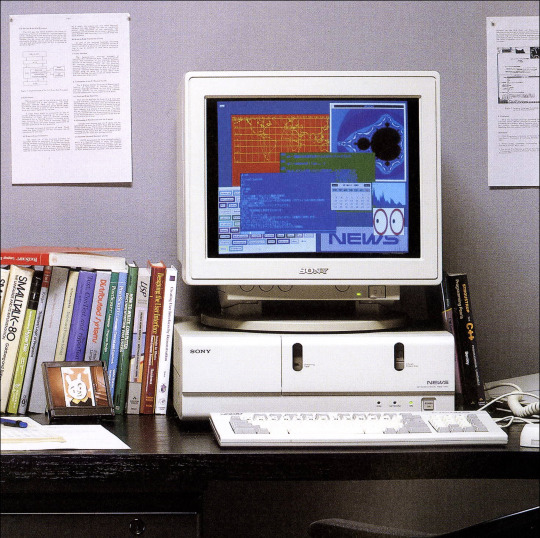
Sony News "Network Engineering Workstation" (1987)
News were Unix workstations sold in the late 80s and early 90s. Early PlayStation development kits were based on this hardware.
545 notes
·
View notes
Text
On Celebrating Errors

Isn't it beautiful? The lovely formatted tables of register and stack contents, the trace of function addresses and parameters, the error message ... it's the most beautiful kernel panic I have ever seen.
Why on earth would I be so excited to see a computer crash? What could possibly be beautiful about a kernel panic?
This kernel panic is well-earned. I fought hard to get it.
This kernel panic came from a current NetBSD kernel, freshly compiled and running on Wrap030, my 68030 homebrew computer. It is the result of hours upon hours of work reading through existing code, scattered documentation and notes, writing and rewriting, and endless compiling.
And it's just the start.
As I've said before, a goal of this project has always been to build something capable of running some kind of Unix-like operating system. Now that I finally have all the necessary pieces of hardware, plus a good bootloader in ROM, it's time to give it a shot. I'm not that great with this type of programming, but I have been getting better. I might just be able to brute force my way through hacking together something functional.
It is hard.
There is some documentation available. The man(9) pages are useful, and NetBSD has a great guide to setting up the build environment for cross-compiling the kernel. There are some published papers on what some people went through to port NetBSD to this system or that. But there's nothing that really explains what all these source code files are, and which parts really need to be modified to run on a different system.
I had a few false starts, but ultimately found an existing 68k architecture, cesfic, which was a bare minimum configuration that could serve well as a foundation for my purposes. I copied the cesfic source directory, changed all instances of the name to wrap030, made sure it still compiled, then set about removing everything that I didn't need. It still compiled, so now it's was time to add in what I did need.
... how ... do I ... ?
This is where things get overwhelming very quickly. There is documentation on the core functions required for a new driver, there's documentation on the autoconf system that attaches drivers to devices in the tree, and there's plenty of drivers already to reference. But where to start?
I started by trying to add the com driver for the 16550 UARTs I'm using. It doesn't compile because I'm missing dependencies. The missing functions are missing because of a breaking change to bus.h at some point; the com driver expects the new format but the cesfic port still uses the old. So I needed to pull in the missing functions from another m68k arch. Which then required more missing functions and headers to be pulled in. Eventually it compiled without error again, but that doesn't mean it will actually run. I still needed to add support for my new programmable timer, customize the startup process, update hardware addresses, make sure it was targeting 68030 instead of 68040 ...
So many parts and pieces that need to be updated. Each one requiring searching for the original function or variable declaration to confirm expected types or implementation, then searching for existing usages to figure out what it needs ... which then requires searching for more functions and variable types.
But I got something that at least appeared to have all the right parts and compiled without error. It was time to throw it on a disk, load it up, and see what happened.
Nothing happened, of course. It crashed immediately.
I have no debugging workflow I can rely on here, and at this stage there isn't even a kernel console yet. All I could do was add little print macros to the locore startup code and see where it failed. Guess, test, and revise.
I spent a week debugging the MMU initialization. If the MMU isn't properly configured, everything comes to an abrupt halt. Ultimately, I replaced the cesfic machine-specific initialization code and pmap bootstrapping code with functions from yet another m68k arch. And spent another day debugging before realizing I had missed a section that had comments suggesting it wasn't for the 68030 CPU, but turned out to be critical for operation of kernel memory allocation.
Until this point, I was able to rely on the low-level exception handling built into my bootloader if my code caused a CPU exception. But with the MMU working, that code was no longer mapped.
So then came another few hours learning how to create a minimal early console driver. An early console is used by the kernel prior to the real console getting initialized. In this case, I'm using the MC6850 on my mainboard for the early console, since that's what my bootloader uses. And finally the kernel was able to speak for itself.
It printed its own panic.
The first thing the kernel does is initialize the console. Which requires that com driver and all the machine-specific code I had to write. The kernel is failing at its step #1.
But at least it can tell me that now. And given all the work necessary to get to this point, that kernel panic data printing to the terminal is absolutely beautiful.
#troubleshooting#coding#os development#netbsd#homebrew computer#homebrew computing#mc68030#motorola 68k#motorola 68030#debugging#wrap030#retro computing
69 notes
·
View notes
Text

welcome to the new MacBook Pro experience. But, at least it is Unix (not just Unix this one is certified Unix unlike bastardized version of WSL lol)
83 notes
·
View notes
Note
If the Commodore 64 is great, where is the Commodore 65?

It sits in the pile with the rest of history's pre-production computers that never made it. It's been awhile since I went on a Commodore 65 rant...
The successor to the C64 is the C128, arguably the pinnacle of 8-bit computers. It has 3 modes: native C128 mode with 2MHz 8502, backwards compatible C64 mode, and CP/M mode using a 4MHz Z80. Dual video output in 40-column mode with sprites plus a second output in 80-column mode. Feature-rich BASIC, built in ROM monitor, numpad, 128K of RAM, and of course a SID chip. For 1985, it was one of the last hurrahs of 8-bit computing that wasn't meant to be a budget/bargain bin option.
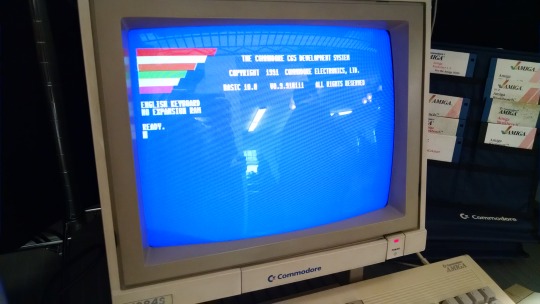
For the Amiga was taking center stage at Commodore -- the 16-bit age is here! And its initial market performance wasn't great, they were having a hard time selling its advanced capabilities. The Amiga platform took time to really build up momentum square in the face of the rising dominance of the IBM PC compatible. And the Amiga lost (don't tell the hardcore Amiga fanboys, they're still in denial).
However, before Commodore went bankrupt in '94, someone planned and designed another successor to the C64. It was supposed to be backwards compatible with C64, while also evolving on that lineage, moving to a CSG 4510 R3 at 3.54MHz (a fancy CMOS 6502 variant based on a subprocessor out of an Amiga serial port card). 128K of RAM (again) supposedly expandable to 1MB, 256X more colors, higher resolution, integrated 3½" floppy not unlike the 1581. Bitplane modes, DAT modes, Blitter modes -- all stuff that at one time was a big deal for rapid graphics operations, but nothing that an Amiga couldn't already do (if you're a C65 expert who isn't mad at me yet, feel free to correct me here).
The problem is that nobody wanted this.
Sure, Apple had released the IIgs in 1986, but that had both the backwards compatibility of an Apple II and a 16-bit 65C816 processor -- not some half-baked 6502 on gas station pills. Plus, by the time the C65 was in heavy development it was 1991. Way too late for the rapidly evolving landscape of the consumer computer market. It would be cancelled later that same year.
I realize that Commodore was also still selling the C64 well into 1994 when they closed up shop, but that was more of a desperation measure to keep cash flowing, even if it was way behind the curve by that point (remember, when the C64 was new it was a powerful, affordable machine for 1982). It was free money on an established product that was cheap to make, whereas the C65 would have been this new and expensive machine to produce and sell that would have been obsolete from the first day it hit store shelves. Never mind the dismal state of Commodore's marketing team post-Tramiel.

Internally, the guy working on the C65 was someone off in the corner who didn't work well with others while 3rd generation Amiga development was underway. The other engineers didn't have much faith in the idea.
The C65 has acquired a hype of "the machine that totally would have saved Commodore, guise!!!!1!11!!!111" -- saved nothing. If you want better what-if's from Commodore, you need to look to the C900 series UNIX machine, or the CLCD. Unlike those machines which only have a handful of surviving examples (like 3 or 4 CLCDs?), the C65 had several hundred, possibly as many as 2000 pre-production units made and sent out to software development houses. However many got out there, no software appears to have surfaced, and only a handful of complete examples of a C65 have entered the hands of collectors. Meaning if you have one, it's probably buggy and you have no software to run on it. Thus, what experience are you recapturing? Vaporware?
The myth of the C65 and what could have been persists nonetheless. I'm aware of 3 modern projects that have tried to take the throne from the Commodore 64, doing many things that sound similar to the Commodore 65.
The Foenix Retro Systems F256K:
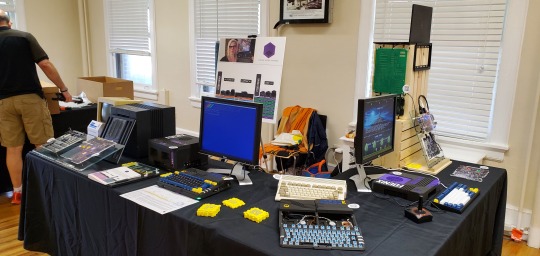
The 8-Bit Guy's Commander X16
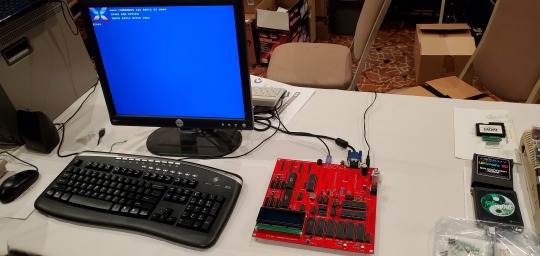
The MEGA65 (not my picture)
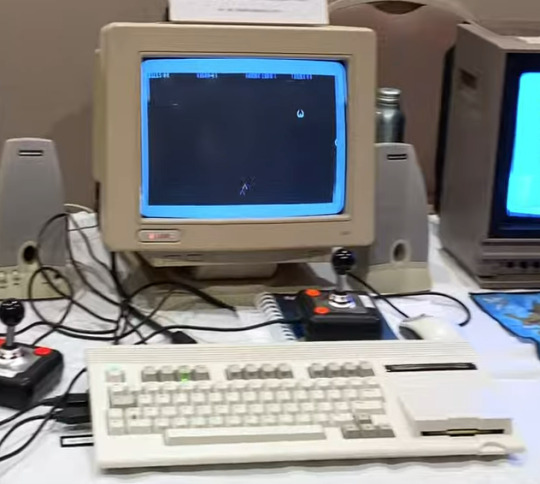
The last of which is an incredibly faithful open-source visual copy of the C65, where as the other projects are one-off's by dedicated individuals (and when referring to the X16, I don't mean David Murray as he's not the one doing the major design work).
I don't mean to belittle the effort people have put forth into such complicated projects, it's just not what I would have built. In 2019, I had the opportunity to meet the 8-Bit Guy and see the early X16 prototype. I didn't really see the appeal, and neither did David see the appeal of my homebrew, the Cactus.
Build your own computer, build a replica computer. I encourage you to build what you want, it can be a rewarding experience. Just remember that the C65 was probably never going to dig Commodore out of the financial hole they had dug for themselves.
262 notes
·
View notes
Text

TRS-80 Microcomputer News February 1983
An updated version of the Model II small-business computer featured on the cover of this issue. The Model 16 the Model 12 could be upgraded into also had a multi-user, 68000-powered operating system at last, although I have seen comments over the years Radio Shack jettisoned not altogether unpromising work on a different operating system to bring in Microsoft's TRS-XENIX. (The article introducing it described all the different Unix commands and programs available, going all the way down to "WUMP.")
25 notes
·
View notes
Text
ok so 4cvit , Legundo, Lynxyliam, Wadebox, HilmCC and Leg.GG seem to be doign some arg thing on twitter and im putting it together here
Here are the links to each post : 4CVIT, Legundo, LynxyLiam, WadeBox, HilmCC, Leg.GG
When I mention someones @ it refers to the one on twitter
1) Each one has a code written on the side which is HEX code. Each one has the name of one person that posted a weird image so, 4C-> Legundo->HilmCC->LynxyLiam->Wadebox->LEGgg -> 4C
2) There are flowers art the top or bottom of each post. They match in pairs so one ofthem is the top half of the flowers and the other is the bottom half. The pairs are: Legundo & wadebox hilmCC & Lynxyliam 4cvit & Leggg
3) Lynxyliam's post has a QR code that when scanned it shows this: the l.eav-es b-attl.e to s/teal t.he su.n b.ut on-ly th/e tallest p.eta-ls bl-oo.m Which is a sentence with morse hiden in it that translates to: PVP
4) @/vikjayced found that the code on 4C's post trhough Bacon cypher translates to DEFEND
5) @/profpie2000 found that the binary on Legundo's post translates to COLLECT
6) Wadebox's post has a quote from Macbeth in the background The left is the orignal text and the right is a modern english version

7) LEGgg has a barcode at the bottom that when scanned shows that it means 25 Teams
8) By the way LegGG is legundo's server with like minigames and stuff. Probably means that this ARG is hinting at some event or new addition to the server
9) xiu-dian in the replies found that when taking the string on HilmCC's post as Qy1jb21wZXTEq3RvcsSTcw== and decoding with base64 it comes out as "C-competītorēs". Im not certain if this is correct but its the only result that makes some amount of sense. If its correct maybe it hints at spanish speakers being in or maybe 3 players per team or something idk.
10) I was told that in January 4C hinted at something in a post that seems to be related to what this event will be.
11) @/cyjen_ figured out that the C_competitors on HiImCC's tweet was refering to C in roman numerals which is 100. So 100 players. Wadebox is saying one part of the puzzle is msising and posing rose emojis
12) LAST CLUE HAS BEEN SOLVED. People on wadebox's discord server found that the flowers in the middle connecting the images have values assigned to them in bedrock mc. These correspond to a unix timestamp giving a date and time.
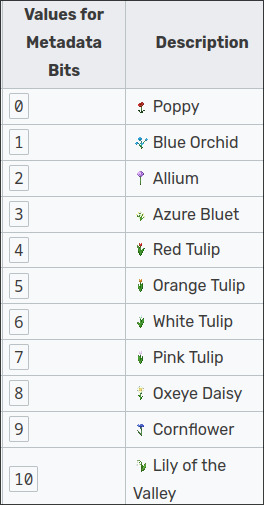
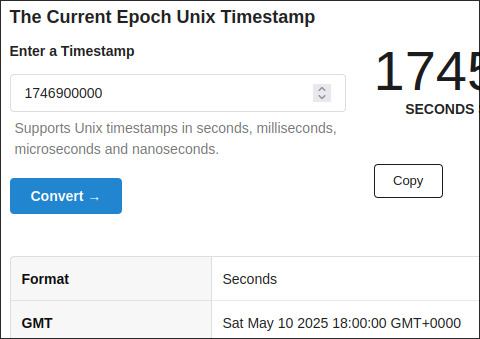
My theory is that this is all hinting to some sort of event in collaboration with LegGG that the 5 worked on together. Might be flower themed. I dont think its a permanent addition to the server becuase 25 teams is too big but I might be wrong. It will be focused on pvp and will have some mechanics that involve defending and collecting stuff. The macbeth quote implies that there will be ways of stealing from other teams. The event will happen on the 10th of may at 6 pm GMT
#4cvit#Legundo#Wadebox#lynxyliam#HiImCC#ITS BEEN SOLVED#props to all the goats in the community who figured stuff out#i was not smart enough to figure out most of it
28 notes
·
View notes
Text
Your Janurary 2nd PARPdate: Hex in a pair of baggy overalls and a hardhat covered in soot edition.
It's been a few months- how about some CONTENT?
With The Troubles have subsided for the time being, Hex has been hard at work hammering out goodies for the Dreambubble update that will then be expanded into the Msparp Update. Rapid-fire lets GO:
Login screen with form validations and visual parity with DB1!

Logging system looking GOOD!

DARK THEME WORKING

A toggleable automatic contract adjuster!

Quirking system ported from dreambubble!
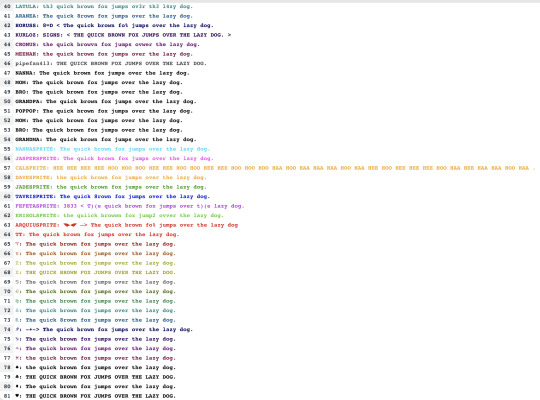
The BBCode system! Quirk compatible, just like back in the old country!
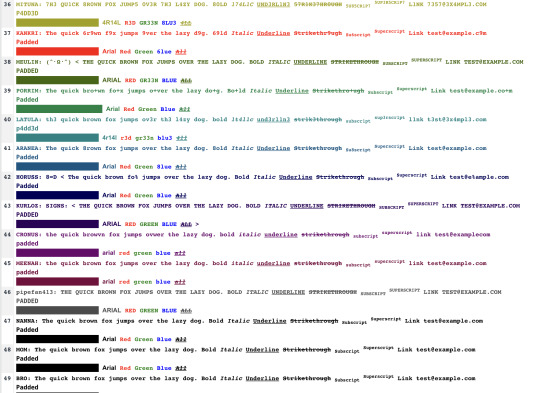
BONE (will be usable with [bone]text[/bone] or [font=Bone]text[/font] !)

Gradients! WITH a new input!
This one is
[gradient=red,orange,yellow,green,blue,indigo,violet]example text[/gradient] OR [gradient=rgb(255,0,0),#ffff00,black]example text[/gradient]

Formatting expansions!
Tooltips!
[tooltip="this_is_a_tool_tip"]Example[/tooltip]

Dividers!
[div]

Dividers WITH TEXT
[div]DIVIDER WITH TITLE[/div]

These also work with both color and gradient tags!


Popouts! Good for chat descriptions! This one is: [modal buttonText=Rules] [div]RULES[/div] [gradient=red,orange,yellow,green,blue,indigo,violet,rgba(0,0,0,0)]Be Kind[/gradient] [/modal]

Countdowns! This one is [countdown=1734422353] The number represents a unix timestamp! https://www.unixtimestamp.com/

Text bubbles! left: [bubble]text[/bubble] right: [bubble_r]text[/bubble]

Pop-outable text preview! Good for super long posts!
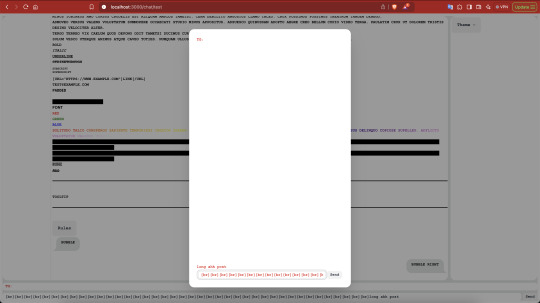
Tables!

This cool new thing where if you're scrolled up and a new message is sent, the bottom of the window changes color to match the text color of the new message!

Hex also got the presets ported and the basics of the character system set up!
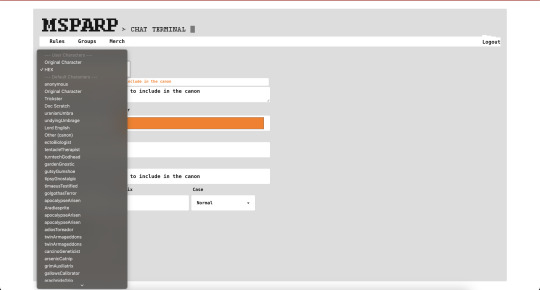
Of note is that Hex has also set up a RUDIMENTARY TEST CHAT for DB2, available HERE:
Keep some things in mind though:
Some of the BBCode is broken
Nothing is saved to the database, only 100 messages are visible at a time because all the others get deleted.
clicky the funny box on the right to change characters
We'll have a better how-to BBCode guide up when DB2 is ready to go live (or sooner!), but that's how it's looking for now. MAN this was a lot of stuff. Hope you all had a fantastic holiday season and an excellent new year.
And thanks for sticking with us, it means the world!
48 notes
·
View notes